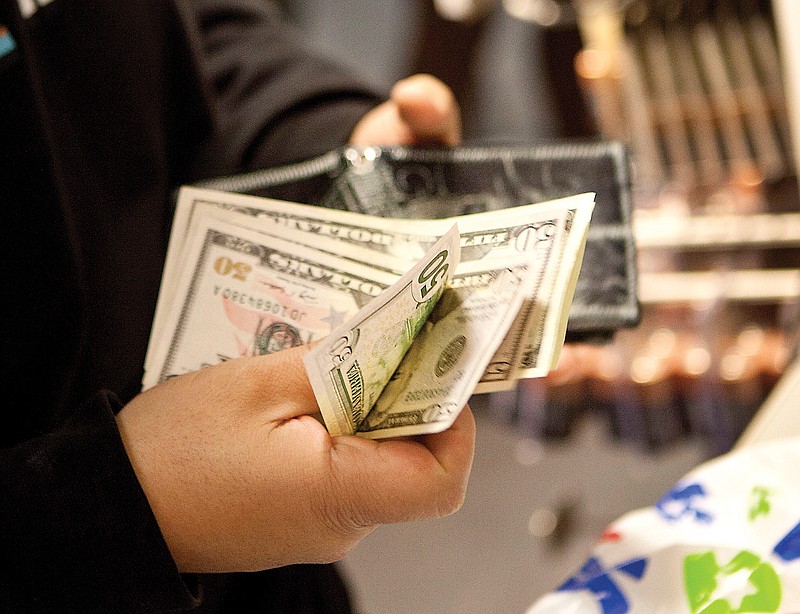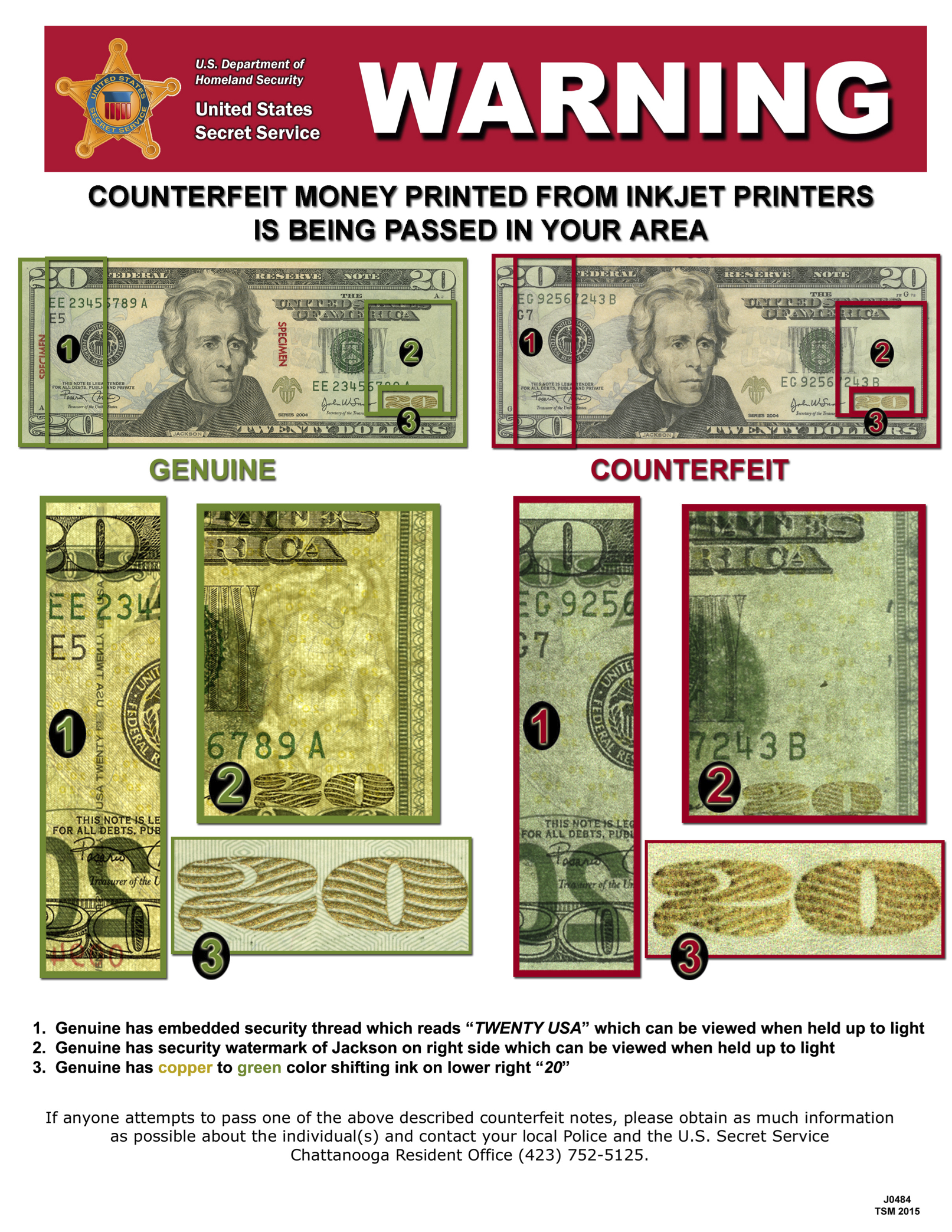How to spot a counterfeit bill
Paper: Genuine bills are made with special paper embedded with small blue and red fibers.Serial numbers: On genuine bills, the serial number is printed uniformly and is the same color as the Treasury seal.Vividity: Genuine bills are high-quality prints with crisp, unbroken lines.Watermark: Genuine bills have a built-in watermark, usually of the featured portrait.Security strip: Genuine bills feature a security strip that is detectable by UV light.Detection pen: While useful, detection pens are not foolproof.Compare: Look at a suspect bill and a genuine of the same denomination. Check for differences, not similarities.Source: U.S. Secret Service
Help catch counterfeiters
The U.S. Secret Service asks businesses and individuals to be on the lookout for suspicious currency. If someone attempts to pass a counterfeit, try to obtain as much information as possible about the individual(s). Call local police and the Chattanooga office of the U.S. Secret Service, 423-752-5125.
Justin Maupin can tell by the feel. J.C. Clark notices if the length is just off. Another employee said the fakes smell like fabric softener.
Businesses in Chattanooga, like All Things Groovy on Frazier Avenue where Maupin and Clark work, have ways to tell if money is counterfeit or genuine. Recently, Hamilton County, Marion County and the city of Chattanooga have seen an increase in counterfeit money, said Juan Alicea, resident agent in charge of the Chattanooga office of the U.S. Secret Service.
"For the last two months our office registered an increase in counterfeit passing activity," Alicea said in an email. "Mostly with fake $20 notes."
The fakes have been passed mostly in heavily populated areas like downtown Chattanooga, the riverfront and the Gunbarrel Road area, Alicea said. Retail businesses such as Wal-Mart, Target, Lowe's, gas stations, fast-food chains, mall stores and local restaurants all have been affected.
The counterfeit bills are poor in quality and likely come from domestic computer printers, Alicea said, indicating the counterfeits are not associated with organized crime.
"However, it is common to see this type of counterfeit associated with drug dealing in the domestic setting," he said. "Nevertheless, most passing incidences in our area are perpetrated by one or two persons visiting a store and paying with counterfeit. Unaware stores will then pass the counterfeit bill to an unsuspecting client."
No busts have been made in the Chattanooga area, which is why Alicea and the Secret Service, which was established in 1865 to suppress counterfeit currency, are asking the public to be more aware of their money.
When a store or citizen discovers a counterfeit bill, they aren't reimbursed by the government. This prevents counterfeiters from simply producing bills to turn over for reimbursement.
That happened to Jennie Bartoletti, manager of Four Bridges Outfitters on Market Street. During the store's first Christmas two years ago, a cashier was given a counterfeit $20 bill. Bartoletti didn't notice until she took the money to a bank, where an employee caught the bill immediately. Now, Bartoletti has certain things she looks for.
She opened the cash register and pulled out a $20 bill.
"Apparently there's a texture on everybody's coat on dollar bills," she said, feeling President Andrew Jackson's lapels, which had significant grooving. "It's the one thing [the bank] said nobody has been able to counterfeit."
She also has a marker she uses on bills bigger than $20. When she marks a genuine bill, the ink turns dark. When it's counterfeit, it turns yellow.
However Clark, at All Things Groovy, said she has seen the marker test fail. She's had customers bleach and wash $1 bills and make them into $100 bills, she said.
"So if you use a mark on the thing, it's still saying it's a bill," Clark said.
Alicea and the Secret Service made a warning flier, which is intended to let the public know of things to look out for.
A major indicator is the presence of watermarks, according to the flier. When you hold up a $20 bill to light, there will be a watermark of President Jackson's face in the bottom right corner, and a strip on the left side of the bill that reads "TWENTY USA" repeatedly.
"It doesn't happen that much," Clark said of how much her store sees counterfeit money. "But it does happen."
Contact staff writer Evan Hoopfer at 423-757-6731 or ehoopfer@timesfreepress.com.

